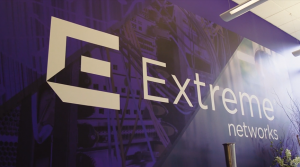Microsoft Windows Azure Grows Up With PaaS From AppFog and Apprenda
![]() Platform-as-a-service (PaaS) providers AppFog and Apprenda are teaming up with Microsoft to bridge on-premise .NET applications with the Windows Azure cloud platform.
Platform-as-a-service (PaaS) providers AppFog and Apprenda are teaming up with Microsoft to bridge on-premise .NET applications with the Windows Azure cloud platform.
It’s all part of Microsoft’s master plan to win the hearts and minds of cloud application developers with an increased friendliness towards open source. But the benefits go beyond language selection.
AppFog and Azure
Lucas Carlson, CEO of AppFog, says that this is a match made in cloud heaven. Microsoft and the Cloud Foundry-based AppFog share a common vision of the platform-as-a-service layer being the lingua franca between developers, hosting environments and clouds – it doesn’t matter the infrastructure on which the app lives, so long as it’s running AppFog. If you move an app from Amazon Web Services to Windows Azure by way of this integration, it requires absolutely no changes to services or code to run. Using PaaS to eliminate vendor lock-in is not a new idea. But it’s certainly new to Microsoft.
And speaking of Amazon Web Services, Carlson has called out the cloud infrastructure pioneer publicly for leveraging its considerable data gravity to keep developers locked into its services.
But by helping AppFog bring .NET, PHP and Node.js to its offering, and enabling Azure as an infrastructure deployment choice, Microsoft is committing to helping keep those doors open and enabling application portability. And as a nice side-benefit for AppFog, it’s now the only Cloud Foundry forked project with native .NET support, giving it a differentiator from Iron Foundry or Uhuru.
“I’m personally very bullish on Microsoft,” Carlson says in regards to Azure’s open source play. “They can take a while to enter a market, but when they do, they get it right.”
Microsoft’s endgame here has always been the attraction of open source developers to Azure as a platform. Using AppFog’s new Azure integration, devs can perform their own experiments with Azure. Azure integration is available to select AppFog developers now, in private beta, with the functionality hitting Public Beta “within 180 days.”
Apprenda and Azure
Meanwhile, Apprenda has launched Apprenda Azure, which takes its existing private cloud .NET PaaS product and extends it into a hybrid cloud model. In other words, Apprenda is enabling customers to migrate applications and workloads between on-premises and Windows Azure public cloud environments, dovetailing nicely with the hybrid cloud enhancements that Microsoft added to Azure just yesterday.
Like AppFog, Apprenda is debuting its Azure solution first to a select group of customers ahead of general availability later this year.
As CloudAve’s Krishnan Subramanian points out, this is extremely strategic for Microsoft and Apprenda both – Apprenda could easily extend this product to add support for, say, Windows Server instances running on Amazon Web Services, while Microsoft is playing to its own strengths and enabling integration with open technologies rather than try to get to a state of openness on its own.
The real takeaway here is that Microsoft seems to be growing up, and realizing that it doesn’t have to own all of the stack all of the time – and in fact, that approach turns off the current generation of developers immensely. In a real way, Microsoft is taking steps to ensure Azure’s relevancy in a market where it finds itself in the unusual position of being the underdog.
A message from John Furrier, co-founder of SiliconANGLE:
Your vote of support is important to us and it helps us keep the content FREE.
One click below supports our mission to provide free, deep, and relevant content.
Join our community on YouTube
Join the community that includes more than 15,000 #CubeAlumni experts, including Amazon.com CEO Andy Jassy, Dell Technologies founder and CEO Michael Dell, Intel CEO Pat Gelsinger, and many more luminaries and experts.
THANK YOU









